Daniel Byman testifies before the House Committee on Foreign Affairs’ Subcommittee on Terrorism, Nonproliferation, and Trade on the global threat of Iran post-nuclear deal. Read his full testimony below or watch coverage of the hearing.
Chairman Poe, Ranking Member Keating, members of this distinguished subcommittee, and subcommittee staff, thank you for the opportunity to testify.
Relationships with terrorist and militant groups are integral to Iran’s foreign policy. The clerical regime in Tehran sponsors a range of organizations in the Middle East and maintains the capacity to conduct international terrorism outside the region. Iran’s terrorism and destabilization efforts are primarily a threat to U.S. interests and allies in the Middle East: Tehran’s activities worsen civil wars and contribute to the destabilization of the region. Iran does not appear to be actively targeting the U.S. homeland with terrorism, but its capacity remains latent. Tehran uses its ability to strike U.S. assets outside war zones to deter the United States and as a contingency should the United States attack Iran.
Support for militant and terrorist groups in Iraq, Syria, Yemen, and elsewhere benefits Iran in several ways. It enables Tehran to shore up key allies like the Syrian regime of Bashar al-Asad. It also gives Iran leverage against regional rivals like Saudi Arabia. Ties to militant groups strengthen pro-Iran voices in the region, increasing Iran’s influence in some capitals and in the more remote hinterlands of several countries. Finally, the threat of Iranian terrorism against otherwise stable countries is a factor these countries must consider if they choose to confront Tehran.
For the Trump administration to better counter Iranian influence in the Middle East, it should seize the opportunity to reset U.S. relations with key regional allies. Many Middle Eastern allies had lost faith in the Obama administration and several, notably Israel and Saudi Arabia, are going to elaborate lengths to ignore the missteps and often contradictory behavior of the Trump administration in the hopes of closer cooperation. Additional pressure on entities like the Islamic Revolutionary Guard Corps would help send the right message to allies and to Iran. Washington should also highlight the costs of Iran’s adventurism to ordinary Iranians to raise domestic awareness of, and discontent with, the regime’s foreign policy. The United States should step up its efforts to build a credible and moderate Syrian opposition, putting additional pressure on Iran’s Syrian ally. In Yemen, Washington should support negotiations to end the war as the current Saudi approach is giving both Iran and the Al Qaeda affiliate in Yemen opportunities to expand their influence.
At the same time, the Trump administration must remember the limits of U.S. power and Iran’s ability to push back. The 2015 Joint Comprehensive Plan of Action (JCPOA), for all its flaws, remains better than any current plausible alternatives, and pulling out of the agreement would be a mistake. In general, Iran’s use of militant groups is well-entrenched: a successful policy would reduce the scope and scale of Iranian support but not end it. In addition, Iran has leverage and many vulnerabilities to exploit given its role in fighting the Islamic State and the exposure of U.S. troops in Iraq and Syria to Iranian-directed violence.
My statement first details Iran’s motivations for supporting militant and terrorist groups, with an emphasis on Iraq, Syria, and Yemen. I then discuss the threat to the United States, both directly and indirectly. I argue that Iran’s overall stance toward militant groups is not likely to change in the near-term. I conclude by offering policy recommendations for the Trump administration.1
Iran’s Motivations for Supporting Terrorist and Militant Groups
Iran has supported terrorist and militant groups in the Islamic world since the 1979 revolution. In his 2016 testimony, Director of National Intelligence (DNI) James Clapper warned: “Iran—the foremost state sponsor of terrorism—continues to exert its influence in regional crises in the Middle East through the Islamic Revolutionary Guard Corps—Qods Force (IRGC-QF), its terrorist partner Lebanese Hizballah, and proxy groups” – an assessment that has stayed roughly constant for many years.2
Iran has long sought to “try hard to export our revolution to the world,” in the words of Ayatollah Khomeini, the clerical regime’s dominant revolutionary leader.3 This goal is embedded in Iran’s constitution and in the missions of organizations such as the Islamic Revolutionary Guard Corps (IRGC), a military and paramilitary organization that oversees Iran’s relationships with many substate groups.
Revolutionary ideology, however, has long taken a backseat to more strategic goals. In the decades since the 1979 revolution, Iran has used terrorism and support for militant groups to undermine and bleed rivals, intimidate the Gulf states and other neighbors, project power to make itself a player in the Israeli-Palestinian dispute and other arenas, disrupt peace negotiations that might isolate Iran and benefit Israel, and deter enemies, including the United States, that might otherwise use force against it. Iran has also sponsored terrorist attacks to take vengeance on countries that have supported its enemies, hosted its dissidents, or killed its operatives.
Finally, as a relatively weak state with hostile neighbors, Iran maintains ties to violent groups for contingencies, strengthening the relationship as need be depending on changing circumstances. Given Iran’s considerable success in spreading its influence in the Middle East and hostility to the United States and its allies, many observers often overrate its power. Iran’s conventional military is weak, and its economy, while beginning to improve, remains in poor shape. Ties to terrorist and militant groups is a relatively cheap way for Iran to offset its weaknesses.
Because Iran works through terrorist and militant groups, it gains a degree of deniability for some of its actions. This deniability, however, is better characterized as willing disbelief on the part of many countries rather than true uncertainty. If a group like the Lebanese Hizballah carries out an attack, observers may debate whether Iran gave the order. However, the broader Iranian policy that facilitates and supports such attacks is rarely in question. The depth of Iran’s ties, the shared goals between Iran and many proxies, the clerical regime’s long history of association with violent groups, and the fact that many past instances of terrorism showed involvement of individuals at or near the top of Iran’s hierarchy should lead observers to err on the side of Iranian responsibility.
Current Iranian Activities: A Brief Review
Tehran’s closest militant ally is the Lebanese Hizballah, perhaps the most capable terrorist group in the world. Iran helped create Hizballah in the early 1980s, and in subsequent decades has armed, trained, and otherwise nurtured it. This assistance is massive: Iran regularly gave Hizballah over $100 million a year, and in many years the figure is significantly higher. Iran’s military aid includes relatively advanced weaponry, such as anti-tank and anti-ship cruise missiles, as well as thousands of rockets and artillery systems. Hizballah has emerged as a key bulwark of the Syrian regime, and Hizballah operatives work with Iran globally to prepare and conduct terrorist attacks.4
Tehran has long worked with Palestinian groups. Relations are especially close to Palestine Islamic Jihad, though these ties discredited the group among many Palestinians. Tehran has also had extensive ties to Hamas at different times in the group’s history, though their fallout over the Syrian and Yemeni civil wars lead to a decline in funding and military aid and frayed, but did not end, relations in general. In 2016, however, the pragmatic Hamas again resumed its public praise for Iran, in part because the coup in Egypt deprived Hamas of a key ally and because by then revolution in Syria looked less likely.5 Iran, unlike other states, was willing to offer Hamas serious weaponry as well as funding.
In Iraq, Iran has played an influential role since the toppling of Saddam Hussein’s regime in 2003. Iran has close ties to the Haider al-Abadi government in Baghdad, but its goals differ from those of its Iraqi partners. Iran wants a state that is weak and vulnerable to its influence, while Iraqi leaders seek a strong regime and country. In addition to relations with the Abadi administration, Iran maintains influence by supporting a host of militant groups, particularly within the Hashd al-Shaabi (or Popular Mobilization Forces), an umbrella militia organization that is playing a leading role in pushing the Islamic State out of Iraq.6 Many preexisting Shi’a militias supported (and even created) by Iran, such as the Badr Organization, Asa’ib Ahl al-Haq, and Kata’ib Hizballah, joined the Hashd al-Shaabi, thus gaining greater popular legitimacy, combat experience, and state recognition. Iran gives these groups, which number perhaps 100,000 in total, money, arms, training, and other forms of assistance. Through these ties, Iran exercises influence is both at the national level in Iraq and at the local level.
In Syria, Tehran is the chief patron of the regime of Bashar al-Asad, and without Iran’s help it is likely the regime would have fallen by now. Iran has long seen the Syrian regime as a vital ally – it is Tehran’s only true state ally in the Arab world, and perhaps even in the entire world. To save the Syrian regime, Iran has deployed several thousand IRGC and regular army forces,7 and Iran also commands another 25,000 or so foreign Shi’a fighters from Afghanistan, Iraq, Lebanon, and Pakistan.8 Regime forces number perhaps 250,000 in total, counting both regular and irregular forces, so Iranian-supported foreigners represent at least 10 percent of the total and an even larger percentage of the forces on which the regime can truly rely.9
Iran arms, trains, and funds these foreign fighters. Quasi-government foundations in Iran also provide financial support for the wounded and the families of the slain. In Syria, Iranian officers often command these fighters (as they also do for many Syrian groups), and Iran works with Syria to provide logistical support.10 The foreign fighters have played a role in almost every aspect of combat, helping guard key areas, storm cities, and shore up Syrian regular army forces.
Hizballah in particular has played critical roles in battles for Qusayr, Damascus, Aleppo, and other cities, bolstering Syrian government forces and providing key shock troops when necessary.11 The intervention has come at a high cost for Hizballah—an estimated 1,500-2,000 dead and many thousands more wounded, which are significant numbers for the relatively small group.12 The Syria conflict has also forced Hizballah to devote less attention and resources to its traditional adversary, Israel. In addition, the conflict is exhausting for the Lebanese Shi’a and may make Hizballah more cautious in the future. However, as much as the war has been a serious strain on the organization and its personnel, it has also provided valuable combat experience, greater access to weapons and technology, and, through Russia, an education in conventional maneuver warfare.13
In addition to giving the Syrian regime more combat power, using proxies from Afghanistan, Iraq, and Pakistan to fight in Syria will have the long-term impact of increasing Iran’s influence in these countries in years to come. When these fighters return, they will have organizational and personal ties to Iranian leaders. In addition, their increased military power will make them more important local actors, helping their communities but also Iran.
In Yemen, Iran provides small arms to Houthi forces, and the use of anti-ship cruise missiles against U.S. and Emirati warships suggests greater Iranian investment as well as technical training and assistance. However, there is little publically available evidence of any significant personnel presence.14 In contrast to Iran’s presence in Iraq and Syria, Yemen is not a strategic priority for Tehran, and it is probably using its support for the Houthis as a way to gain leverage against the UAE and Saudi Arabia, drain their attention (and coffers), and counter what it perceives as the Gulf states’ aggressive stance against it.
Because Iran’s approach is more strategic than ideological, it is willing to work tactically with groups like Al Qaeda, even though mutual mistrust limits cooperation. Iran has at times allowed Sunni jihadists to transit Iran and given Al Qaeda operatives a de facto safe haven, albeit one that Al Qaeda has contended is restrictive.15
Iran’s partnering with various Shi’a and minority groups in the Middle East has worsened the sectarian climate, made existing civil wars bloodier, and contributed to a back and forth with Saudi Arabia and other Sunni states that further ratchets up regional tension. For Sunni states, Iran’s support to militant groups is proof that the clerical regime is bent on spreading its revolution and that it supports subversive activities in their own countries. Iran, however, sees itself as an “Islamic” actor, not a Shi’a power, and often works with Shi’a groups by default because few Sunni groups are willing to ally with it – an approach that increases its isolation from the Sunni powers.
Most of Iran’s efforts against Israel involve aiding proxies such as Hizballah or assisting groups like Hamas to fight Israel. The killing of Iranian scientists before the JCPOA, which Tehran blamed on Israel, and Israel’s killing of key operatives also fostered a desire for revenge, which Iran has attempted to take through terrorist attacks.
The Implications of Iran’s Actions for the United States
Iran’s use of extra-regional terrorism directly against the United States appears to have declined since negotiations over Iran’s nuclear program began in earnest. Iran has not repeated any plot similar to the 2011 plot on the Saudi ambassador to the United States. DNI Clapper’s public testimony in 2016 stressed the danger Iran’s terrorism posed to U.S. allies and interests, not the U.S. homeland.
However, Iran probably has at least some capacity to use terrorism to strike the U.S. homeland and almost certainly has the ability to strike U.S. assets around the world. Iranian leaders probably fear any strike would create a dangerous escalation with the United States. Nevertheless, they want to maintain the capacity as a possible deterrent to increases in U.S. pressure and especially direct U.S. military action against Tehran.
A military strike by Israel or the United States on Iran would probably prompt a more massive terrorism response. Tehran backs terrorist groups in part to keep its options open: after a U.S. strike, it would call in its chits. Iran would probably attempt terrorist attacks around the world, using its own operatives, the Lebanese Hizballah, and other groups. Tehran would also step up militant activity against U.S. forces in Afghanistan, Syria, and Iraq, using its proxies and perhaps its own paramilitary forces to conduct attacks. The scope and scale of the Iranian response would depend on the level of casualties from the initial attack against it as well as the political circumstances of the regime in Tehran (and those of strong groups like Hizballah) at the time the attack occurred.
Iran’s support for the Iraqi government and other forces fighting against the Islamic State adds a further degree of complexity to U.S. efforts to diminish Iran’s influence. Iran-backed forces in Iraq have proven effective, often far more so than the Iraqi government. Although U.S. officials contend that there is no formal cooperation between U.S. forces and the IRGC or Hizballah, the United States does coordinate with the Lebanese government and especially the Iraqi government – and both of these coordinate with Iran and have militaries and security forces that Iranian intelligence has probably penetrated extensively. So de facto coordination, or at least deconfliction of operations, is likely occurring.
Successes against the Islamic State in the last two years are posing additional challenges regarding the Iranian role. Many Shi’a militias claim they will resist any lasting U.S. presence in Iraq.16 This would represent a serious security challenge as the Iraqi Security Forces cannot be expected, either militarily or politically, to effectively protect U.S. forces or defeat remnants of the Islamic State without U.S. assistance.
If the United States targets IRGC forces in Syria or that of its proxies, they might strike back against U.S. forces in Syria and elsewhere in the region. If the United States more aggressively targets the Syrian regime, there is greater potential for conflict with Iran, especially if Tehran believes the United States is playing a significant role and is likely to maintain this role until the Syrian regime falls.
Support for Militant Groups Likely to Continue
Iran is likely to continue to put support for militant groups at the front and center of its foreign policy, but Tehran also faces problems should it seek to significantly increase its support for radical groups.
Iran can sustain its high levels of support. In April 2017, the World Bank reported Iran’s economy did well in 2016 due to sanctions relief facilitated by the JCPOA. This economic relief has in turn certainly helped Iran sustain its regional military activities, proxy support, and weapons development.17 In addition, Iran believes support for militants pays policy dividends. The Asad regime, once teetering, is now ascendant or at least in a stronger position. Iran’s support to various groups in Iraq have given Tehran influence at both the local and national level. Hizballah has proven a loyal ally that has helped Iran project its influence in Lebanon and in neighboring states.
Although some look to the recent election in Iran and hope for dramatic changes, this is not likely though halting progress is possible. President Rouhani, an early leader of Iranian intelligence and a member of the regime’s elite, is committed to Iran’s political system. However, he is a pragmatist who recognizes that Iran’s economic weakness and political isolation hinder its government and is thus willing to make concessions to alleviate these conditions. Rouhani’s priorities are economic and social, not diplomatic: he believes that the JCPOA and a less aggressive foreign policy will increase international investment and lead to an end of sanctions, enabling Iran’s economy to flourish. Rouhani as president is better than the alternative of a clerical regime ideologue, but there should be no illusions. In addition, much of Iran’s support for terrorist and militant groups is controlled by the IRGC and other more aggressive elements of the regime.
Fortunately, Hizballah at this point is leery of any escalation against Israel despite its continuing enmity. Because Hizballah’s forces are deeply engaged in the draining war in Syria – a war that also decreased Hizballah’s popularity among non-Shi’a in Lebanon and the broader Arab world – it is overstretched, and it would be difficult for the group to sustain several large wars at once. Since the 2006 war with Israel, Hizballah has been cautious in how it has approached Israel, and it respects Israel’s formidable military. Hizballah’s leaders also know that renewed conflict would lead to a devastating Israeli response in Lebanon, which might further decrease Hizballah’s popularity there.
The cost of Iran’s support is considerable though difficult to judge from unclassified sources. Iran spends billions of dollars on supporting its proxies and deploying its own military forces – a huge sum for a country with significant economic problems and a limited military budget.18 In addition, the JCPOA raised expectations of economic improvement among the Iranian people, and spending more on militants abroad makes it harder for the regime to satisfy these demands at home.
Iran’s considerable economic mismanagement also limits its power. The World Bank also reported that Iran’s oil production is nearing capacity and that continuing sanctions are inhibiting Iran’s reintegration into international financial markets.19 Despite the economic benefits gained from the JCPOA, unemployment, especially youth unemployment, remains high. Many among the regime, including the Supreme Leader, seek a “resistance economy,” an approach that will diminish Iran’s dependence on international markets but, in so doing, hinder economic prosperity in general.20
Policy Implications and Recommendations for the Trump Administration
Because the Islamic State has suffered significant reverses in the last two years, Iran is emerging as more of a priority for the United States in the Middle East. The Trump administration has yet to articulate a coherent Iran or Middle East strategy, although the President’s remarks in his trip to Saudi Arabia and Israel suggest Iran may be the focus of his administration’s regional policies. The Trump administration’s rhetoric is aggressive, but it has largely continued to follow the policies of the last administration and has signed off on sanctions waivers.21
The Trump administration appears to view Iran’s challenges more broadly than did Obama’s administration. They see the flaws rather than the benefits of the JCPOA and emphasize Iran’s support for militant groups and other dangerous activities.22 Because the JCPOA, for now at least, has put Iran’s nuclear program on the back burner, there is an opportunity to focus on Iran’s support for militant groups and other problems Iran causes in the region.
The Trump administration has an opportunity to reinvigorate U.S. alliances in the Middle East. Saudi Arabia and other key allies split with the Obama administration over the Iran deal, U.S. support for several of the Arab Spring revolutions, the U.S. reluctance to engage in Syria, and other issues. As the warm Saudi reception of President Trump indicates, they are hoping for a closer relationship, especially given the Trump administration’s signals that it is comfortable embracing dictators and does not favor incorporating human rights into U.S. diplomacy.
In addition to developing closer relations with allies, the Trump administration should highlight the cost of Iran’s support for Asad, Hizballah, and other organizations to ordinary Iranians, making it clear to the Iranian public that their economic suffering is linked to Iran’s aggressive foreign policy. The depth of Iranian popular support for these groups is not clear, and the United States should try to increase the domestic price for Iran’s aggressive foreign policy. Washington should also shine a spotlight on Tehran’s ties to Al Qaeda and other Sunni jihadist groups. Such a relationship is embarrassing to both Tehran and the Sunni jihadists, and an information campaign could harm this cooperation and further discredit both.
The Trump administration should also lay down clear “red lines” regarding Iran’s support for militant groups. Particularly important lines include the transfer of unconventional weapons to a terrorist group or any strike on the U.S. homeland or U.S. facilities abroad. Administration officials, in consultation with Congressional leaders, should decide in advance where the red lines are and what would happen if a red line were crossed. They must also have the will and ability to follow through on the response should this happen. During both the George W. Bush and Obama administrations, Tehran repeatedly crossed U.S. red lines in Iraq and Afghanistan with relatively few consequences, reducing the credibility of future U.S. threats. If the United States is not serious about a response, it is better not to threaten at all.
Although I do not favor designating the Islamic Revolutionary Guard Corps a terrorist group for technical reasons (as a state actor, it does not belong in the non-state category we use for terrorism), I favor similar or identical sanctions on it, perhaps using Executive Order 13224.23 I would urge Congress to grant the President authority to punish the IRGC, amending legislation related to state sponsorship of terrorism as appropriate. In addition to supporting terrorist and militant groups, the IRGC has historically been used to crush anti-revolutionary forces at home and quell restive minorities.24
To counter Iran’s influence in the Middle East, the United States should also step up support for anti-Asad opposition forces in Syria, particularly those from the Sunni Muslim community. Greater support would give the United States more credibility with its regional allies and would help the United States push back against Iran’s ally Syria as well as the Islamic State. It would also provide the United States and its allies more options in a future Syria. Efforts to substitute U.S. forces for local forces, however, are likely to create power vacuums that Iran or other hostile actors might exploit.
Any substantial new initiative or form of pressure is going to require allies. Economic pressure requires support from European and Asian allies, while military and diplomatic pressure requires Middle Eastern help as well.
Another important diplomatic option is to encourage U.S. allies in the Arab world to improve their relationships with the Iraqi government. Baghdad works with Tehran in part because it has few other potential partners in the Middle East. Many Iraqis, including some Iraqi Shi’a, chafe at Tehran’s dominant influence in their country and embrace their Arab identity. Integrating Iraq further into the Arab world will also help Baghdad win over Iraqi Sunnis and hinder future Islamic State recruiting efforts.
Even as the United States engages more in the Middle East, it must also prevent allies from engaging in self-defeating behavior that gives Iran, Sunni jihadists, and other hostile actors opportunities. Saudi Arabia and other states must decrease their anti-Shi’a rhetoric and otherwise be willing to deescalate sectarian tension in order to improve relations with the Iraqi government and to take the wind out of the sails of the Islamic State and similar groups. The Saudi Arabian and Emirati intervention in Yemen has made the civil war there worse, given the Al Qaeda affiliate there far more power, and created an opportunity for Iran to expand its influence.25 Pushing allies to negotiate and end the war will create opportunities to reduce ties between the Houthis and Iran as well as set back Al Qaeda.
Just as Iran faces limits on its power, so too does the United States face limits in its ability to reduce Iran’s influence in the Middle East. The JCPOA, for all its faults, is better than any current alternatives. If the U.S. unilaterally abrogates the agreement, it is not likely that U.S. allies would curtail their economic ties to Iran or otherwise follow the U.S. lead. The situation would be far worse than it was before the JCPOA was signed. In addition, Iranian leaders who had championed the deal would fear losing domestic support and would be more likely to embrace hardline policies abroad. The United States, with its troop presence in Afghanistan, Iraq, and Syria, is highly vulnerable to Iranian proxy attacks and must recognize that escalation on the U.S. side can be met with escalation from Tehran.
An effective policy against Iran will also require a sustained and steady U.S. commitment. Inconsistent rhetoric, bombast, and efforts to score points to domestic audiences at the expense of Muslims will hinder U.S. efforts to build an anti-Iran alliance, among other costs. Similarly, anti-Iran rhetoric that is not tied to actual policies and events on the group will make Iran more likely to work with anti-American local groups. Unless the administration is more careful in its rhetoric, allies and adversaries alike are more likely to see the United States as unreliable or to simply ignore signals they do not like, leading to misperceptions that could backfire on the United States.
Finally, the Trump administration must set a realistic bar for success. Tehran’s strategic options and desire to shape the Middle East to its liking will drive it to continue to work with a range of militant and terrorist groups and selectively use violence. Better U.S. policy can reduce the scope and scale of Iran’s hostile activities but not end them altogether.
-
Footnotes
- This testimony draws in part on two of my books: Deadly Connections: States that Sponsor Terrorism (Cambridge: Cambridge University Press, 2005) and A High Price: The Triumphs and Failures of Israeli Counterterrorism (Oxford: Oxford University Press, 2011). Also relevant to my testimony and to this hearing are my articles, “Iran, Terrorism, and Weapons of Mass Destruction,” Studies in Conflict and Terrorism 31, no. 3 (2008): 169-181; “The Lebanese Hizballah and Israeli Counterterrorism,” Studies in Conflict and Terrorism 34, no. 12 (2011): 917-941; and Daniel Byman and Bilal Saab, “Hezbollah Hesitates?” Foreign Affairs, January 21, 2015, https://www.foreignaffairs.com/articles/israel/2015-01-21/hezbollah-hesitates.
- James Clapper, Worldwide Threat Assessment of the U.S. Intelligence Community: Statement for the Record for the Senate Armed Services Committee (February 9, 2016): 6, https://www.armed-services.senate.gov/imo/media/doc/Clapper_02-09-16.pdf.
- As quoted in Anoushiravan Ehteshami, After Khomeini: The Iranian Second Republic (New York: Routledge, 1995), 131.
- For a review of Hizballah’s international agenda, see Matthew Levitt, Hezbollah: The Global Footprint of Lebanon’s Party of God (Washington, DC: Georgetown University Press, 2013).
- Hazem Balousha, “Why Hamas Resumed Relations with Iran,” June 29, 2016, Al-Monitor, http://www.al-monitor.com/pulse/originals/2016/06/gaza-hamas-resume-relations-iran.html.
- Priyanka Boghani, “Iraq’s Shia Militias: The Double-Edged Sword against ISIS,” Frontline, March 21, 2017, http://www.pbs.org/wgbh/frontline/article/iraqs-shia-militias-the-double-edged-sword-against-isis/.
- See Paul Bucala, “Iran’s New Way of War in Syria,” Institute for the Study of War, February 2017, http://www.understandingwar.org/sites/default/files/Iran%20New%20Way%20of%20War%20in%20Syria_FEB%202017.pdf.
- Farzin Nadimi, “Iran’s Afghan and Pakistan Proxies: In Syria and Beyond?” Washington Institute, August 22, 2016, http://www.washingtoninstitute.org/policy-analysis/view/irans-afghan-and-pakistani-proxies-in-syria-and-beyond; Hashmatallah Moslih, “Iran ‘foreign legion’ leans on Afghan Shia in Syria War,” Al Jazeera, January 22, 2016, http://www.aljazeera.com/news/2016/01/iran-foreign-legion-leans-afghan-shia-syria-war-160122130355206.html. Nadimi gives the figure of 14,000 Afghan forces and 5,000 Pakistani forces, whereas Moslih gives the figure of 20,000. For the Afghan fighters, the numbers include significant numbers of Afghan refugees whose families live in Iran. See also: Cody Roche, “Assad Regime Militias and Shi’ite Jihadis in the Syrian Civil War,” Bellingcat, November 30, 2016, https://www.bellingcat.com/news/mena/2016/11/30/assad-regime-militias-and-shiite-jihadis-in-the-syrian-civil-war/; Phillip Smyth, The Shiite Jihad in Syria, (Washington Institute, February 2015): 41, https://www.washingtoninstitute.org/uploads/Documents/pubs/PolicyFocus138_Smyth-2.pdf.
- Roche, “Assad Regime Militias and Shi’ite Jihadis in the Syrian Civil War.”
- Nadimi, “Iran’s Afghan and Pakistan Proxies.”
- Mona Alami, “Hezbollah Embedded in Syria,” Atlantic Council, March 2, 2017, http://www.atlanticcouncil.org/blogs/syriasource/hezbollah-is-embedded-in-syria.
- Mona Alami, “After Aleppo victory, what’s next for Hezbollah?” Al-Monitor, January 24, 2017, http://www.al-monitor.com/pulse/originals/2017/01/hezbollah-syria-aleppo-victory-role-lebanon.html.
- Muni Katz and Nadav Pollak, “Hezbollah’s Russian Military Education in Syria,” Washington Institute, December 24, 2015, http://www.washingtoninstitute.org/policy-analysis/view/hezbollahs-russian-military-education-in-syria.
- Sam LaGrone, “USS Mason Fired 3 Missiles to Defend from Yemen Cruse Missile Attack,” USNI News, October 11, 2016, https://news.usni.org/2016/10/11/uss-mason-fired-3-missiles-to-defend-from-yemen-cruise-missiles-attack.
- Al Qaeda impressions of the relationship with Iran can be found in Nelly Lahoud et al., “Letters from Abbottabad: Bin Ladin Sidelined?” Combating Terrorism Center at West Point May 3, 2012, http://www.ctc.usma.edu/posts/letters-fromabbottabad-bin-ladin-sidelined.
- Rikar Hussein and Mehdi Jedinia, “Shi’ite Militias Could Turn against U.S. Forces after IS Leaves Mosul,” Voice of America News, March 23, 2017, http://www.voanews.com/a/shiite-militias-could-turn-against-us-forces-after-is-leaves-mosul/3779207.html.
- The World Bank, “Iran’s Economic Outlook,” (April 2017), http://www.worldbank.org/en/country/iran/publication/economic-outlook-april-2017.
- For open estimates based on unclassified sources, see Karim El-Bar, “Proxies and Politics: Why Iran Funds Foreign Militias,” Middle East Eye, October 6, 2016, http://www.middleeasteye.net/essays/proxies-and-politics-why-iran-funds-foreign-militias-2124504867. See also Eli Lake, “Iran Spends Billions to Prop Up Assad,” June 9, 2015, https://www.bloomberg.com/view/articles/2015-06-09/iran-spends-billions-to-prop-up-assad
- The World Bank, “Iran’s Economic Outlook.”
- Rohollah Faghihi, “Iran’s supreme leader calls for ‘economy of resistance’ in Nowruz message,” Al-Monitor, March 20, 2017, http://www.al-monitor.com/pulse/originals/2017/03/iran-nowruz-video-message-khamenei-rouhani-2017-1396.html.
- See, for example, Elise Labott and Nicole Gaouette, “Trump adds to tough talk on Iran even as he sticks with deal – for now,” CNN, April 20, 2017, http://www.cnn.com/2017/04/19/politics/tillerson-iran-nuclear-deal-review/.
- Suzanne Maloney, “Under Trump, U.S. policy is moving from accommodation to confrontation,”Markaz blog, May 11, 2017, https://www.brookings.edu/blog/markaz/2017/05/11/under-trump-u-s-policy-on-iran-is-moving-from-accommodation-to-confrontation/.
- For this proposal to use Executive Order 13224, see Mark Dubowitz and Ray Takeyh, “Labeling Iran’s Revolutionary Guard,” Foreign Affairs, March 6, 2017, https://www.foreignaffairs.com/articles/iran/2017-03-06/labeling-irans-revolutionary-guard. See also the State Department’s description of the Order at https://www.state.gov/j/ct/rls/other/des/122570.htm
- Afshon Ostovar, Vanguard of the Imam: Religion, Politics, and Iran’s Revolutionary Guards (New York: Oxford University Press, 2016).
- International Crisis Group, “Yemen’s al-Qaeda: Expanding the Base,” February 2, 2017, https://www.crisisgroup.org/middle-east-north-africa/gulf-and-arabian-peninsula/yemen/174-yemen-s-al-qaeda-expanding-base.
The Brookings Institution is committed to quality, independence, and impact.
We are supported by a diverse array of funders. In line with our values and policies, each Brookings publication represents the sole views of its author(s).
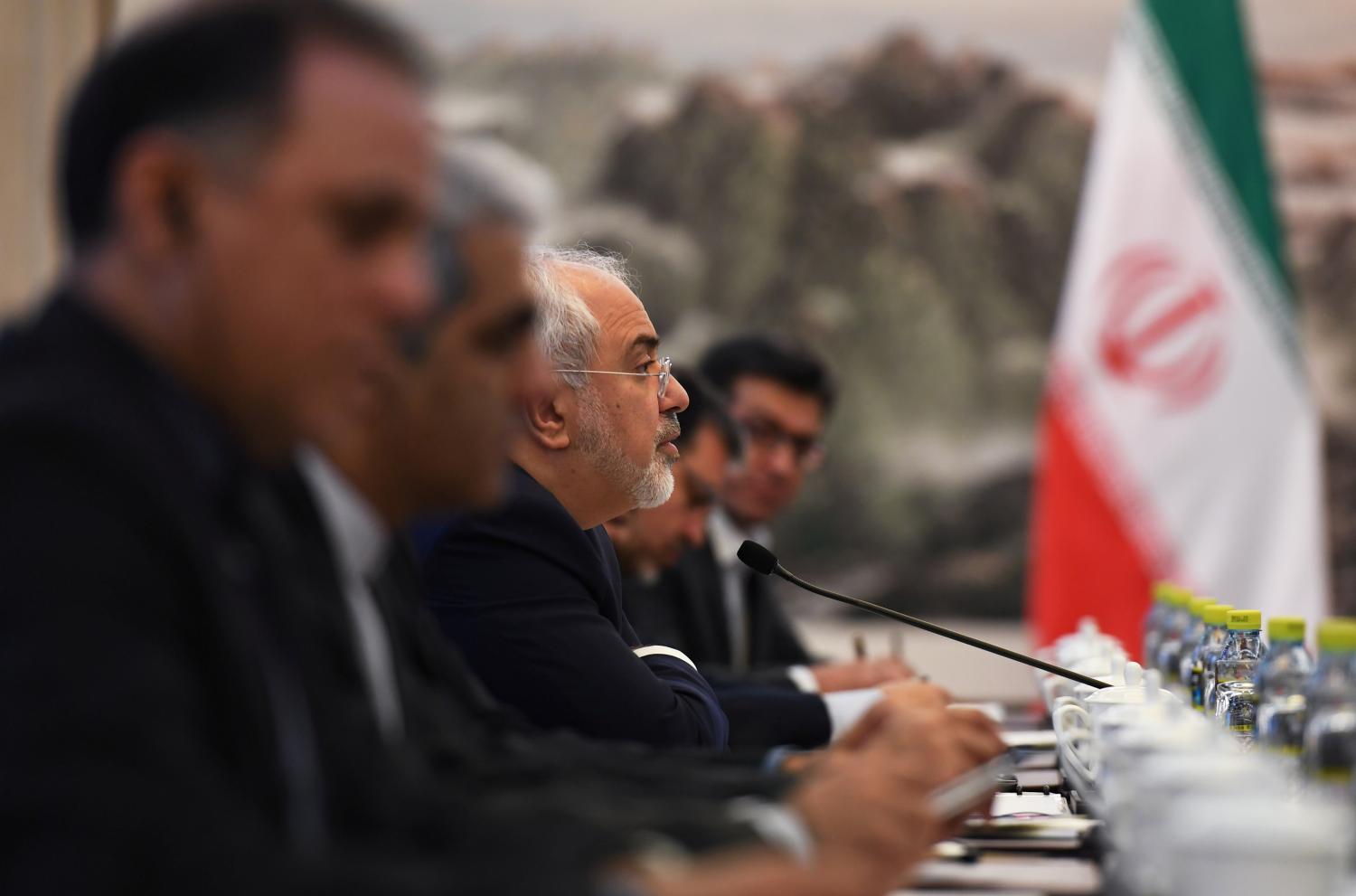
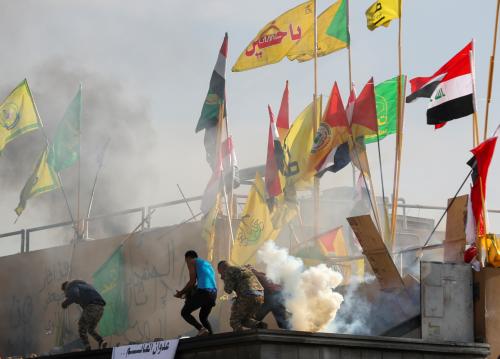
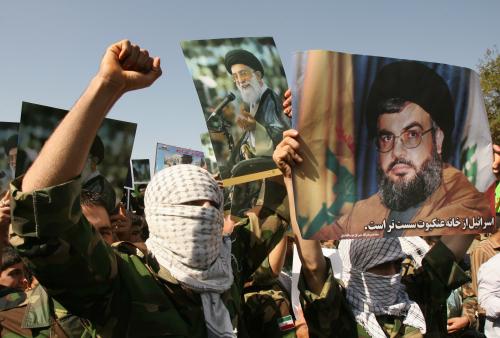
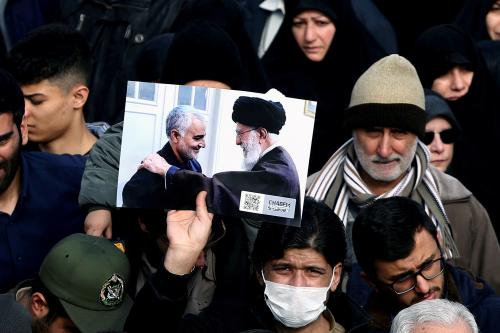

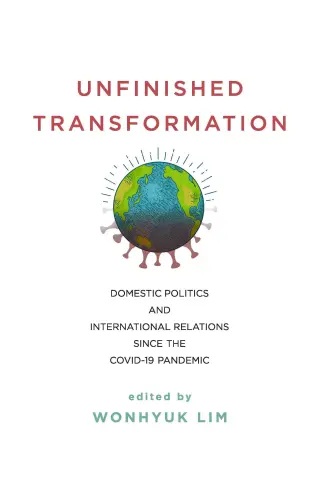




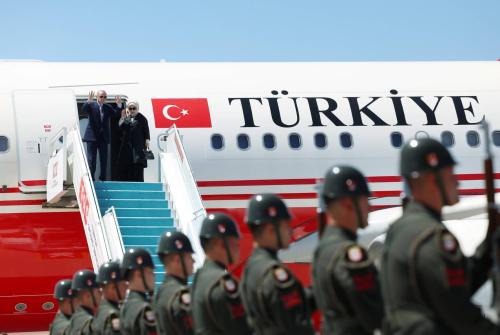
Commentary
TestimonyNuclear deal fallout: The global threat of Iran
May 24, 2017